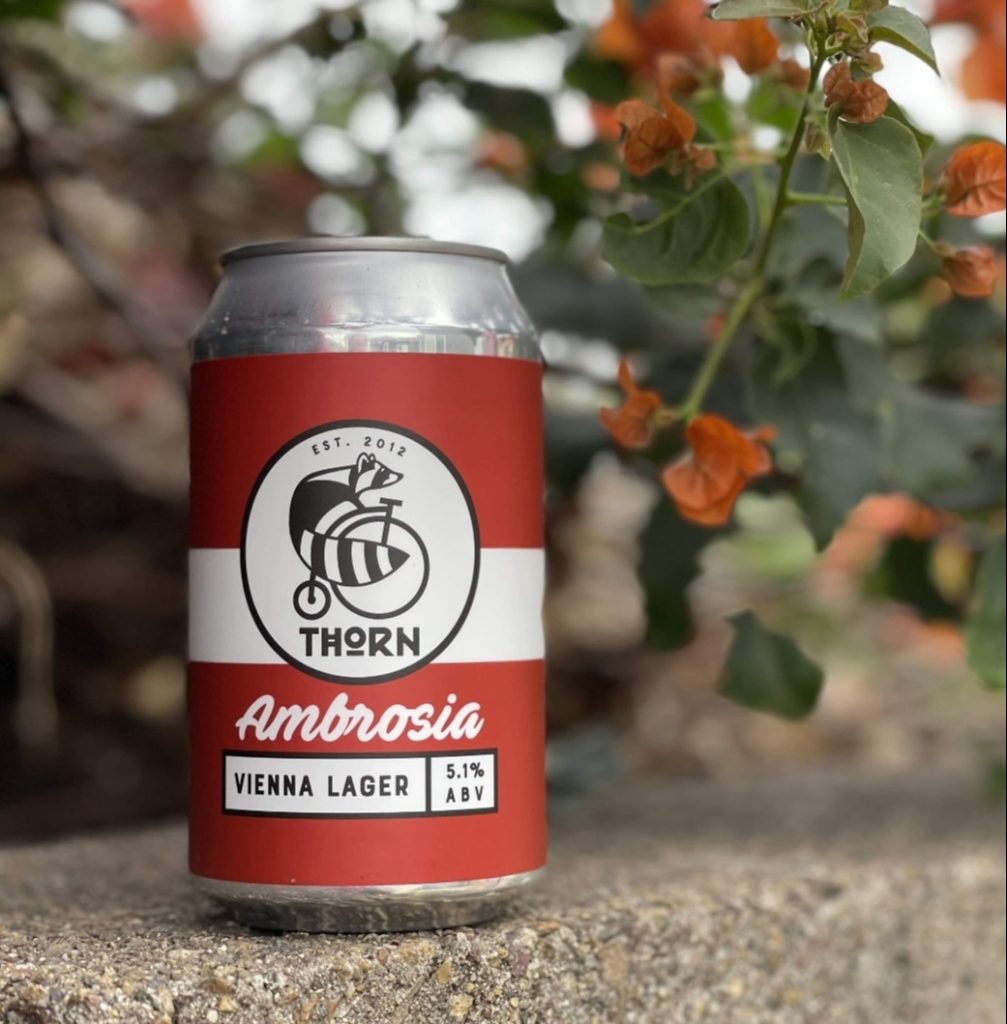
By Shannon Lynnette
Synergy.
If there was any word that actively described the progression of our beloved elixir through our short timeline on this planet, this does so adeptly. The history and development of beer is reliant on the exchange of information, the ebb and flow of diplomacy, and clever adaptation to circumstance; the interaction of these elements creating an end product that inarguably is better than the singularities of its origin. In order to delve fully into the synergism of beer, it is imperative to acquaint ourselves with the oft forgotten and underappreciated: the Vienna lager.
Pre-dating the Bohemian lager and running concurrently to the well-known Märzen, the Vienna lager proudly, albeit somewhat briefly, occupied the electric creative space of Central Europe before enjoying a brief resurgence in Mexico. It would go on to pave the way for a handful of popular macro beers before being reinvigorated in its original ideation by today’s craft brewers. It can be found humbly hanging out on the beer boards of intrepid breweries, filling the unique space of gentle caramel, bready, pale-ish lager goodness; an affable diplomat to any tasting room. Not too bad for a beer that got its start in youthful petty theft.
The genesis of this red-hued lager can be traced to what was one of the largest Austrian breweries, the Klein-Schwechat Brewery in the nation’s capital of Vienna. Founded in 1632, the Klein-Schwechat Brewery was purchased in 1796 by a beer waiter, Franz Anton Dreher. In 1804, at the tender age of 69, he married the 18-year-old master brewer’s daughter Katharina Widter. They would go on to impressively have four children, and in 1820, at the age of 85, Franz passed away, leaving the brewery under the stewardship of Katharina until his 10-year-old son, Anton Dreher, was able to take the reins. While it was common during this time to seek outside education through apprenticeships, with the weight of an inherited, successful family business on his shoulders, it was necessary for Anton to accumulate as much brewing knowledge as he could. His educational pursuits would see him through Munich, London, Scotland, and pertinent to this discussion, Burton-on-Trent.

During his first apprenticeship, he made a lifelong friend in fellow student, Gabriel Sedlmayr, whose family owned Munich’s Spaten Brewery. With a collective rapacious thirst to learn more about their craft with a specific interest in English brewing, the two decided to set off on a sojourn abroad in 1833. In the 1830’s, the English were busy revolutionizing kilning technology. Instead of exposing the grain to direct heat, which would result in a malt that was dark in color and often toasty and smoky in flavor, they were experimenting with exposing it to hot air instead of direct heat. This practice would in turn deliver a lighter malt with more delicate and nuanced flavors. Dreher and Sedlmayr fell into utter fascination and adulation with this new kilning method. Having found employment at England’s brewing epicenter of the day, Burton-on-Trent, the amiable duo found themselves in a unique position to not only amass experience but also pilfer samples of this enigmatic wort.
Returning to the Schwechat Brewery in 1836, Dreher set to work to emulate this novel kilning technique while still utilizing the lagering methods of the region. Keeping in close contact with his friend Sedlmayr, their collaborative efforts to unravel the kilning mysteries of the alluring paler ales came to fruition in 1841 when Dreher released the Vienna Lager and Sedlmayr the Märzen for public consumption. This was a reprieve from the dark lagers common in the area and was met with great alacrity as it flooded the Austro-Hungarian region. The Märzen would go on to become integrated in the marital celebration, turned agricultural exhibition, turned all-out international two-week bender known as Oktoberfest before being usurped in popularity by the fest bier. Having no such event to ride the coattails of, the Vienna lager faded from popularity through the late 1800’s with the devastating effects of World War I and the dissemination of the Austro-Hungarian Empire driving it to near extinction. To this day, the Vienna lager is a rarity in the region of which it garners its namesake, but thanks in part to the imperialist aspirations of Napoleon III, conservative politicking and the well intentioned albeit naïve heart of Archduke Ferdinand Maximilian, the style would see a remarkable spark and reinvention in Mexico in the 1860’s.
Napoleon III, not to be confused with his grandfather Napoleon I, was notably the first president and last monarch of France, and possessed as insatiable a desire to conquer and acquire lands as any of his predecessors. In 1861, Mexico’s Conservative Party was seeking to supplant Benito Juárez. The Americans were in the throes of a Civil War and in probable need of an allied monarchy. Napoleon III opportunistically sought a stronghold in Mexico. He established a monarchy with the Archduke of Austria, Maximilian, and named him the emperor of Mexico. To put it mildly, Maximiliano’s intentions to paternally rule his newly bestowed people and stand up for the rights of the indigenous population didn’t bode well on the capricious stage of political web weaving .After a final stand where many lives were lost, and despite the imploring of diplomats and leaders, Maximiliano, the five-year emperor of Mexico, was executed on a hill in 1867. Fortuitously, five years was long enough to impart the brewing techniques and traditions of Maximiliano’s native Austria unto the people.
The Vienna lager had made its debut and, having established a much stronger foothold than France, would be reborn. As is a recurring theme anytime a beer style travels, it assimilates into the new culture by taking on ingredients and process tweaks customary to the new region. From the Vienna lager, and with the transformative addition of rice and/or corn, came the primordial goo of Mexican amber lagers. Due to some failed revolutions in the 1840’s, Mexico’s northern neighbors saw a surge in German immigration throughout the mid-to-late 1800’s. While these familial recipes would forever shape the American beer landscape, the populace favored lighter fare than these amber beers proffered. Mexico saved the Vienna lager.
Our species has long had an entanglement with beer. Coinciding with our desire to cultivate the dirt on which we tread, it has helped us raise the altars of deities, to mourn our dead, sustained us through poverty and helped us weather and topple draconian governments. It has faithfully run alongside us, a manifestation of the ingenuity and creative fire that propels us, a testament to the adaptability and momentum to keep creating. Our history is shared. This series is heralded with what this author believes to stylistically be the summation of that sacred relationship. With respect and deference, behold the Vienna lager; nicknamed ‘fire in a glass.’ Forged in the lapping yearning flames of progress, stoked by the insatiable thirst of novelty, left to glowing kindling and reinvigorated by a few errant embers. It is beer, and it is Prometheus’ gift incarnate.

Thirsty? Here are some suggested interpretations of the Vienna lager for you to explore.
Audacious San Diego Brewers:
· Sky Tiger | Amplified Ale Works (Pacific Beach, East Village)
· Lieber Augustine | Burning Beard Brewing (El Cajon)
· Rojo Magnifico | Dos Desperados Brewery (San Marcos)
· Weekend in Vienna | Embolden Beer Co. (Miramar)
· Natural Bridge: Vienna Lager | Eppig Brewing (Vista, Point Loma, North Park)
· Vigorish Vienna Lager | Five Suits Brewing (Vista)
· Alta Mar | Ketch Brewing (Kearny Mesa)
· Ambrosia Vienna Lager | Thorn Brewing (Barrio Logan, Mission Hills, North Park)
And for Funsies: Try a Dos Equis Amber and/or a Negra Modelo to see the adaptation of the style after it was adopted by Mexican brewers. Pick up a Samuel Adams Boston Lager to see how the style was adapted on the macro level for American palates.

